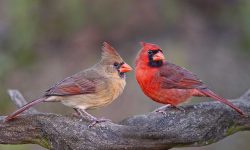Pandas, with their adorable round faces, fluffy fur, and playful demeanor, have captured the hearts of people worldwide. However, despite their popularity, there’s one common question that many are curious about: what is a group of pandas called?
In this article, we’ll delve into the fascinating world of pandas, explore what defines a group of pandas, and reveal interesting facts that you might not have known. Whether you’re a panda enthusiast or just someone curious about animal behavior, you’re in for a treat!
What is a Group of Pandas Called?

When you think of pandas, you might picture a solitary creature lazily munching on bamboo in the forests of China. And you’d be right in assuming that pandas are largely solitary animals. But when they do come together, their grouping has a unique name. A group of pandas is referred to as an “embarrassment.”
Yes, you read that right! The term “embarrassment” may seem unusual, but it has historical and linguistic roots. Let’s explore the background and meaning behind this unique name.
The Origin of the Name “Embarrassment”
The word “embarrassment” to describe a group of pandas is believed to have originated from the Middle English word “embarrass,” which means to confuse, hinder, or entangle. This likely refers to the way pandas behave when they are together—often clumsy, uncoordinated, or slow-moving, especially when they’re interacting with one another. This endearing, somewhat awkward nature is why the term “embarrassment” has been used to describe a group of these cuddly creatures.
Interestingly, the use of the term “embarrassment” isn’t specific to pandas alone—other animals, like giraffes, are also known to be referred to in such a whimsical manner. But with pandas, the term seems especially fitting given their playful, almost clumsy, personalities.
Other Terms for Groups of Pandas
While “embarrassment” is the most common term for a group of pandas, you might also hear a few alternative terms in different contexts. These include:
-
A Bamboo: Sometimes, pandas are referred to as a “bamboo” when gathered together, highlighting their most well-known food source. This term, though not as commonly used as “embarrassment,” is sometimes seen in poetic descriptions or informal language.
-
A Cup: Less widely recognized, but “cup” is occasionally used as a reference to a small group of pandas, symbolizing their small, round shapes, and gentle nature.
Why Are Pandas Largely Solitary?
Before we dive into the fun facts about pandas, let’s take a quick look at why pandas tend to be solitary creatures. Understanding their behavior and social structure helps us appreciate their grouping habits even more.
Solitary Nature
Pandas are typically solitary animals, and this solitary behavior is mostly due to their diet. They eat large quantities of bamboo, which provides little energy and requires them to spend most of their time foraging. Since bamboo is plentiful in the areas where pandas live, they don’t need to rely on other pandas for food, unlike species that hunt or gather in packs.
Additionally, pandas are territorial and do not share their resources readily. Male pandas, for instance, are highly territorial and will only tolerate the presence of females during the mating season. The vast majority of a panda’s life is spent alone, only coming together with others in very specific circumstances.
Fun Facts About Pandas and Their Group Behavior
Even though pandas are typically solitary, there are still some fascinating aspects of their behavior when they do interact with others. Here are some fun facts about pandas and their social lives that you might find surprising!
1. Pandas Don’t Form Long-Term Bonds
Unlike many other animals that live in family groups or herds, pandas do not form long-lasting social bonds. A female panda will care for her cubs alone, and once the cubs grow old enough, they are encouraged to leave their mother’s territory. Males and females come together only during the brief mating season, and once mating is over, they part ways.
This lack of long-term bonds contributes to their solitary lifestyle. Cubs, after being weaned, are independent and don’t remain with their mothers. In the wild, pandas usually live alone in large territories.
2. Pandas Can Be Social in Captivity
Although pandas are solitary in the wild, they are known to be more social in controlled environments like zoos and research centers. In captivity, pandas may interact with one another, especially during breeding programs or in exhibits designed to mimic their natural environment. In these situations, pandas can coexist peacefully and sometimes display social behaviors that are not seen in the wild.
For example, in some zoo settings, pandas may engage in playful interactions, particularly when there are younger individuals or cubs. This is an interesting contrast to their solitary lifestyle in the wild.
3. Mating Season is the Only Time Pandas Come Together
Pandas only come together during the short mating season, which typically occurs between March and May. During this time, female pandas emit a scent to signal their availability, and males compete for the attention of females. Once mating has occurred, the male panda generally leaves, and the female takes care of the offspring alone.
This brief period of interaction is the only time pandas engage in social behaviors outside of their solitary lives. The rest of the year, they are solitary animals, focused on foraging, eating, and maintaining their territories.
4. Panda Cubs Stay with Their Mothers for a Long Time
Panda cubs are born incredibly small and helpless, weighing only about 90-130 grams at birth—about the size of a stick of butter. Because of this, they rely heavily on their mother for nourishment and protection. Cubs typically stay with their mothers for up to two years, during which time the mother teaches them how to climb, forage, and navigate their environment. This extended care is essential for the cub’s survival in the wild.
Once the cubs are old enough, they leave their mothers’ care and begin living independently. During this phase, they start exploring and establishing their own territories, though their solitary nature often keeps them far apart from other pandas.
5. Pandas Communicate Using Scent Marking
While pandas are not known for vocal communication, they do communicate with each other through scent marking. Both males and females mark their territories with scent glands, leaving behind their unique odor as a way to communicate their presence to other pandas. This helps avoid unnecessary confrontations, as each panda understands the boundaries of other individuals’ territories.
During mating season, males may also use scent marking to attract females. Interestingly, pandas will also rub against trees or rocks to leave their scent trail for other pandas to follow.
The Panda’s Habitat and Its Influence on Group Behavior
Pandas are native to China, where they primarily live in the mountainous regions of Sichuan, Shaanxi, and Gansu. Their habitat is characterized by dense bamboo forests, which provide both food and shelter. Bamboo forests are crucial to their survival, as bamboo makes up about 99% of their diet. The dense foliage also provides cover from predators and harsh weather conditions.
Because of the solitary nature of pandas, their habitat plays an important role in their behavior. The remote and difficult-to-reach areas they inhabit mean that pandas are unlikely to encounter large groups of other pandas in the wild. This isolation further reinforces their solitary behavior, even though they are not hostile to other pandas.
Conservation Efforts and Panda Socialization
Pandas have long been a symbol of wildlife conservation efforts, with many zoos and research centers working hard to protect and study these remarkable creatures. In the wild, pandas face numerous challenges, including habitat loss and fragmentation, which has made their populations increasingly isolated.
Conservation efforts have focused not only on preserving the panda’s habitat but also on fostering a greater understanding of their behavior. Research centers and zoos around the world have implemented breeding programs to help increase panda populations and provide a safe space for pandas to interact in a controlled environment. These efforts have helped reveal some of the more social aspects of panda behavior, especially in younger pandas who are still learning how to navigate the world.
Conclusion
So, what is a group of pandas called? The answer is “an embarrassment,” a quirky and endearing term that reflects the pandas’ playful and sometimes awkward nature when gathered together. While pandas are generally solitary animals, there’s no denying that they can exhibit some fascinating behaviors when they come together, particularly during the mating season or in captivity. From their solitary lifestyle to their brief moments of socialization, pandas are truly unique creatures.
Whether they’re munching on bamboo alone or interacting in a zoo exhibit, pandas continue to captivate the hearts of people worldwide. And with ongoing conservation efforts, we can hope that future generations will continue to have the opportunity to observe these adorable and enigmatic animals.






